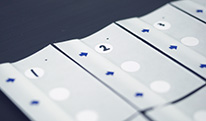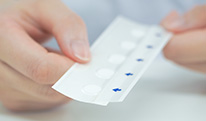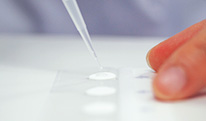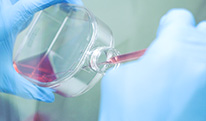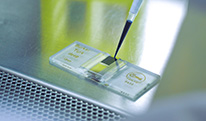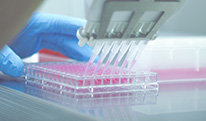Safety Testing
We provide the following clinical and in vitro safety testings for the cosmetic industry.
Clinical Testing for Cosmetics Safety
Clinical
Stinging test
This test evaluates temporary stinging sensation with volunteers with sensitive skin.
Product which pass this test will be allowed to claim as the product “Hypoallergenic Cosmetics” or “Passed Stinging Test on Volunteers with Sensitive Skin” in the Japanese market.
Subjects : 10 subjects ~
Delivery : Approx. one month from receipt of the test order to completion and release of the report.
Sample : Ingredients of cosmetics and final products for skin care, makeup, hair care and body care.
Clinical
Patch test on subjects with sensitive skin
This test is carried out as an in vivo patch test with volunteers with sensitive skin. Products which pass this test will be allowed to claim that the product “Passed Patch Tests on Volunteers with Sensitive Skin” in the Japanese market.
Subjects : 20 or 30 subjects ~
Delivery : Approx. one month from receipt of the test order to completion and release of the report.
Sample : Ingredients of cosmetics and final products for skin care, makeup, hair care and body care.
Clinical
Patch test
This test evaluates whether or not a cosmetic product may lead to irritation of the human skin in vivo. Skin reactions arising from occluded test substance will be scored after a 24-hour exposure. Products which pass this test are allowed to claim that they have “Passed Patch Tests” in the Japanese market.
Subjects : 20 or 30 subjects ~
Delivery : Approx. one month from receipt of the test order to completion and release of the report.
Sample : Ingredients of cosmetics and final products for skin care, makeup, hair care and body care.
Alternative Methods to Animal Testing for Cosmetics Safety
We provide the following alternative-studies for the safety of cosmetics and their ingredients in vitro.
In vitro
Primary skin irritation test with in vitro three-dimensional tissue culture models
This test evaluates the potential for a substance to irritate the skin using a human skin model. The test substance is applied to a three-dimensionally reconstituted human epidermis model. The cell viability is evaluated quantitatively according to the enzymatic conversion of the MTT into a blue formazan salt in viable cells. Thus, the irritability of the test substance is estimated. This test is recommended in OECD test guideline No. 439* as an alternative to animal tests.
* OECD Test Guideline No. 439 as latest version: in vitro Skin Irritation: Reconstructed Human Epidermis Test Method.
Delivery : Approx. 2.5 months from receipt of the test order to completion and release of the report.
Sample : Ingredients of cosmetics.
In vitro
Eye irritation test - cytotoxicity-based in vitro assay
We have two alternative methods of testing with corneal epithelium cells without using laboratory animals. STE test (OECD Test Guideline 491) using SIRC cells is highly reproducible and reasonable at low cost, since cells are cultured in a monolayer.
RhCE test (OEDC test guideline 492) can evaluate insoluble substances by using 3 dimensionally reconstructed human corneal epithelium model.
Delivery : Approx. 1.5 months from receipt of the test order to completion and release of the report.
Sample : Ingredients of cosmetics.
Please note that some samples cannot be tested in STE method due to technical reasons.
In vitro
Phototoxicity - ROS assay
Phototoxicity of cosmetics ingredients to the skin under sunlight is evaluated using a Reactive Oxygen Species (ROS) assay. This test (OECD test guideline 495) is recommended as a reliable with low false negative rate compared to 3T3-NRU test*. ROS assay is highly reproduceble and reasonable at low cost. We suppose ROS assay will be adopted as OECD guideline soon.
A test substance is irradiated by a solar-simulator (290-800nm) and the generation of ROS (¹O₂ and O₂) is evaluated as an indicator of phototoxicity potential.
* Photosafety Evaluation of Pharmaceuticals, Yakushokushinsa No. 0521, the Ministry of Health, Labour and Welfare of Japan (MHLW), May 21st, 2014 which is Japanese endorsement of ICH Harmonised Tripartite Guideline.
Delivery : Approx. one month from receipt of the test order to completion and release of the report.
Sample : Cosmetics ingredients including essential oil, fragrance, plant extracts, powders
In vitro
Single dose toxicity - cytotoxicity-based in vitro assay using SIRC
Intentional or accidental ingestion of a chemical substance may cause acute toxicity. At Saticine Medical, an in vitro cytotoxicity assay of the test substance on SIRC cells is provided as a preliminary prediction of such systemic toxicity.
Delivery : Approx. 1.5 months from the time of the test to release of the report.
Sample : Ingredients of cosmetics.

